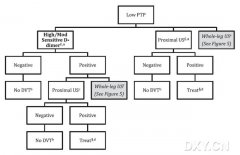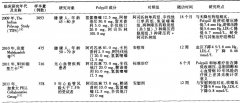读医学网
2011年国际运动障碍协会帕金森病运动障碍指南
发布时间:2014-05-19 10:35 类别:神经系统疾病 标签:update treatments work objective 来源:丁香园
The Movement Disorder Society (MDS) Task Force on Evidence-Based Medicine (EBM) Review of Treatments for Parkinson's Disease (PD) was first published in 2002 and was updated in 2005 to cover clinical trial data up to January 2004 with the focus on motor symptoms of PD. In this revised version the MDS task force decided it was necessary to extend the review to non-motor symptoms. The objective of this work was to update previous EBM reviews on treatments for PD with a focus on non-motor symptoms. Level-I (randomized controlled trial, RCT) reports of pharmacological and nonpharmacological interventions for the non-motor symptoms of PD, published as full articles in English between January 2002 and December 2010 were reviewed.
Criteria for inclusion and ranking followed the original program outline and adhered to EBM methodology. For efficacy conclusions, treatments were designated: efficacious, likely efficacious, unlikely efficacious, non-efficacious, or insufficient evidence. Safety data were catalogued and reviewed. Based on the combined efficacy and safety assessment, Implications for clinical practice were determined using the following designations: clinically useful, possibly useful, investigational, unlikely useful, and not useful. Fifty-four new studies qualified for efficacy review while several other studies covered safety issues.
Updated and new efficacy conclusions were made for all indications. The treatments that are efficacious for the management of the different non-motor symptoms are as follows: pramipexole for the treatment of depressive symptoms, clozapine for the treatment of psychosis, rivastigmine for the treatment of dementia, and botulinum toxin A (BTX-A) and BTX-B as well as glycopyrrolate for the treatment of sialorrhea. The practical implications for these treatments, except for glycopyrrolate, are that they are clinically useful. Since there is insufficient evidence of glycopyrrolate for the treatment of sialorrhea exceeding 1 week, the practice implication is that it is possibly useful.
下一篇:JAMA综述:震颤 上一篇:The Lancet综述:孤独症




